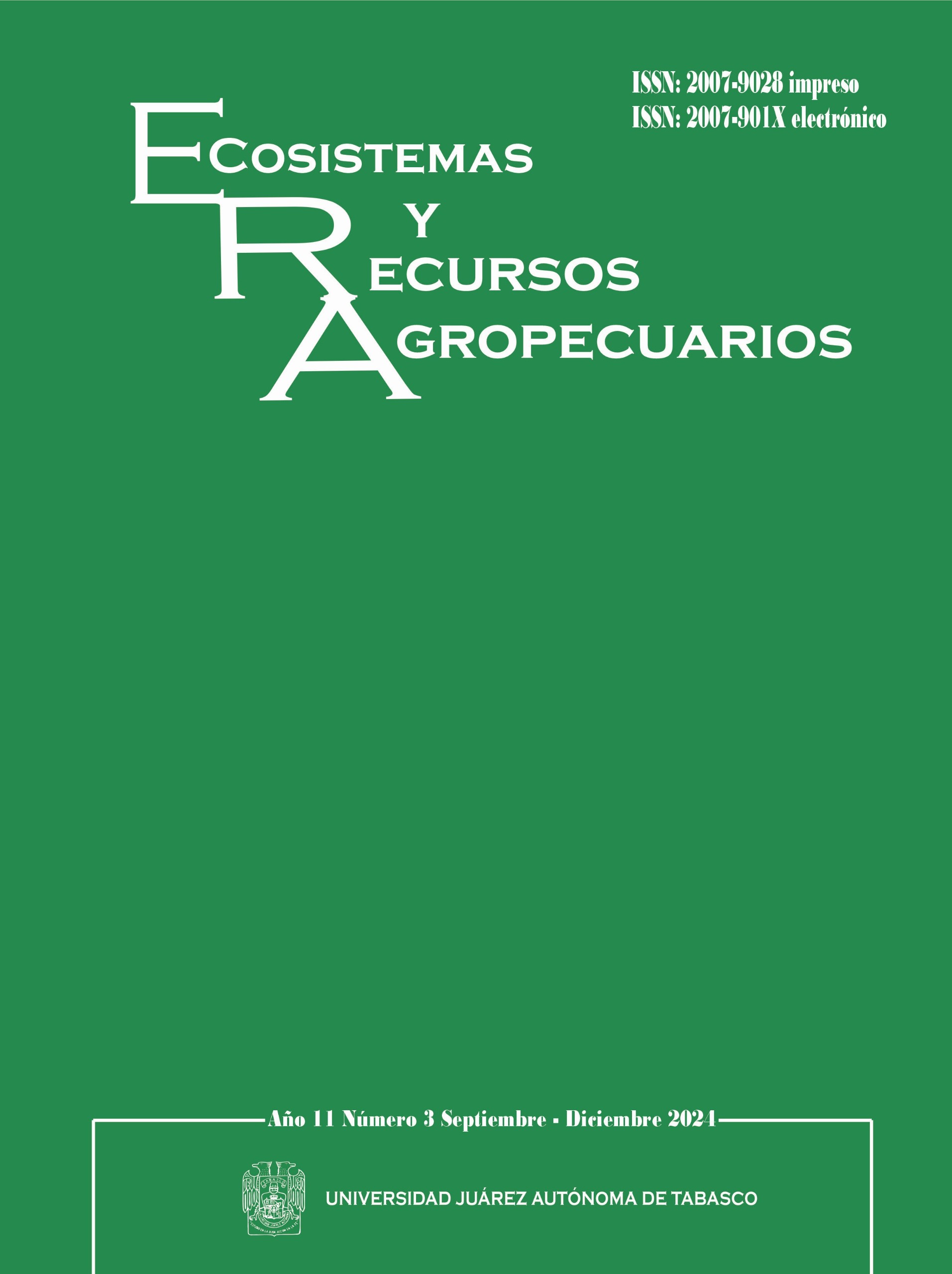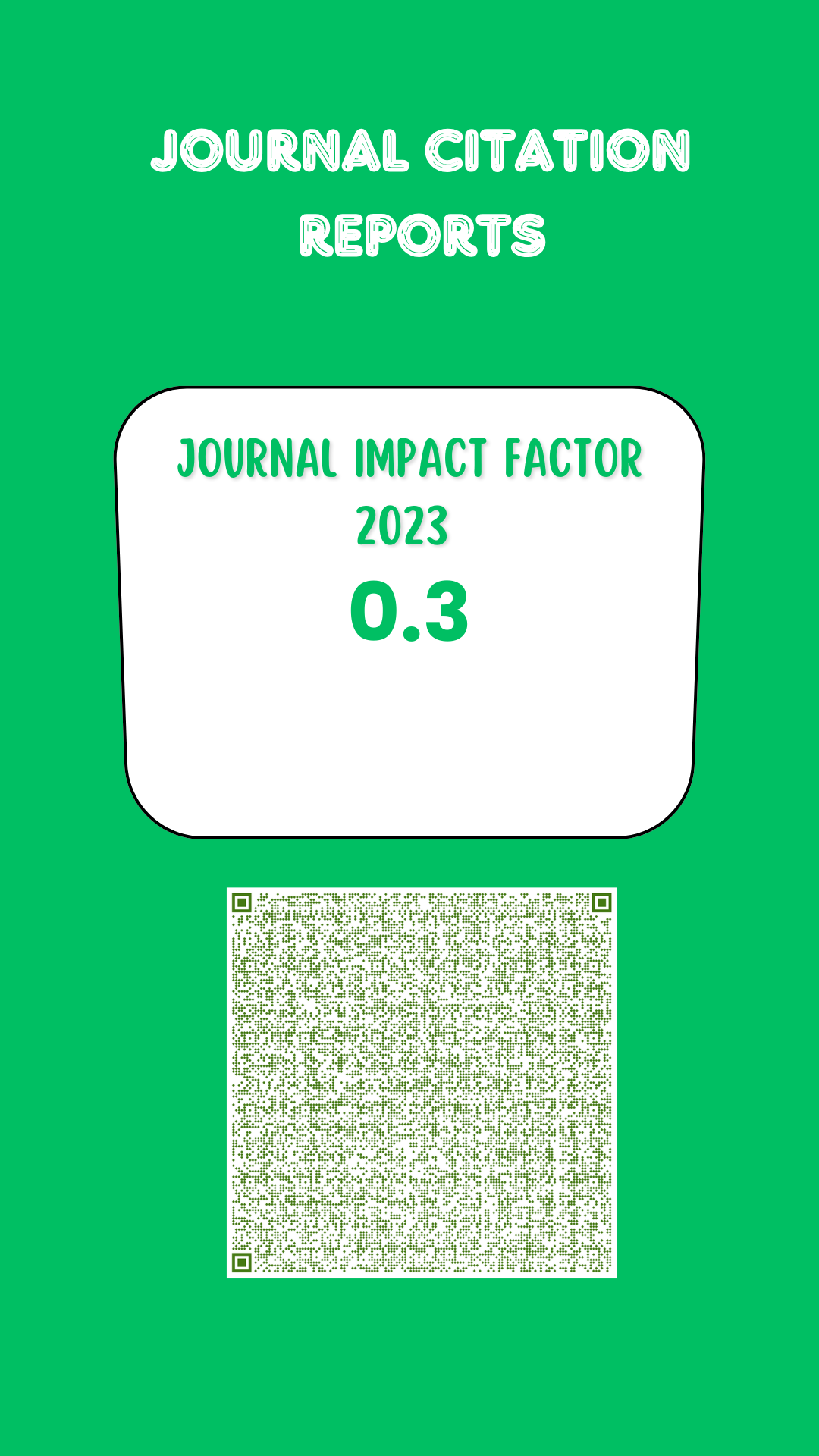Specific wavelengths modify the antioxidant system of tomato and cucumber
DOI:
https://doi.org/10.19136/era.a11n3.4177Keywords:
Antioxidants, Carotenoids, Stimulation, LED lamps, Photosyntetic pigmentsAbstract
Light has a positive impact on the regulation of plant development processes. However, evidence suggests that responses to changes in the light spectrum depend on plant species. The objective of this work was to evaluate the effect of supplemental lighting with LEDs on growth, phytochemical synthesis and fruit quality in tomato and cucumber crops. For this, an experiment was established, tomato (Solanum lycopersicum L.) and cucumber (Cucumis sativus L.) plants were grown with supplemental light from 7:00 p.m. to 12:00 a.m. using LED lamps with blue (455 nm), red (660 nm) and far-red light (730 nm). The treatments were the application of the different wavelengths with one (above the canopy) or two lamps (above the canopy and base of the plant), plus a control (T0) without supplementary light. Changes in agronomic parameters, phytochemical content, and fruit quality were evaluated. The results demonstrated an impact on the height of tomato plants, in addition, photosynthetic pigments increased in tomato leaves (18.4 - 29.1%), lycopene in leaves (166.7 - 207.4%) and cucumber fruits (83.2 - 175.5%), and carotenoid compounds in tomato fruits (106.9 – 127.5%). The quality attributes of the fruits such as TSS, pH and EC were also modified. In conclusion, the results showed that light supplementation through LED lamps induces positive responses in tomato and cucumber crops, improving the quality and bioactive compounds of tomato and cucumber fruits.
Downloads
References
Al-Murad M, Razi K, Jeong BR, Samy PMA, Muneer S (2021) Light emitting diodes (LEDs) as agricultural lighting: Impact and its potential on improving physiology, flowering, and secondary metabolites of crops. Sustainability 13(4): 1-25. https://doi.org/10.3390/su13041985
Alrifai O, Hao X, Marcone MF, Tsao R (2019) Current review of the modulatory effects of LED lights on photosynthesis of secondary metabolites and future perspectives of microgreen vegetables. Journal of Agricultural and Food Chemistry 67(22): 6075-6090. https://doi.org/10.1021/acs.jafc.9b00819
Arvouet-Grand A, Vennat B, Pourrat A, Legret P (1994) Standardization of propolis extract and identification of principal constituents. Journal de Pharmacie de Belgique 49(6): 462-468.
Badmus UO, Klem K, Urban O, Jansen MAK (2022) A meta-analysis of the effects of UV radiation on the plant carotenoid pool. Plant Physiology and Biochemistry 183: 36-45. https://doi.org/10.1016/j.plaphy.2022.05.001
Bantis F, Gkotzamani A, Dangitsis C, Koukounaras A (2022) A light recipe including far-red wavelength during healing of grafted watermelon seedlings enhances the floral development and yield earliness. Agriculture 12(7): 982. https://doi.org/10.3390/agriculture12070982
Bantis F, Smirnakou S, Ouzounis T, Koukounaras A, Ntagkas N, Radoglou K (2018) Current status and recent achievements in the field of horticulture with the use of light-emitting diodes (LEDs). Scientia Horticulturae 235: 437-451. https://doi.org/10.1016/j.scienta.2018.02.058
Casanoves F, Balzarini M, Di-Rienzo J, Gonzalez L, Tablada M, Robledo C (2012) InfoStat User’s manual. 295. InfoStat Group, Facultad de Ciencias Agropecuarias, Universidad Nacional de Córdoba, Argentina. URL http://www.infostat.com.ar. Fecha de consulta: 20 de abril 2024.
Coelho MC, Rodrigues AS, Teixeira JA, Pintado ME (2023) Integral valorisation of tomato by-products towards bioactive compounds recovery: human health benefits. Food Chemistry 410: 135319. https://doi.org/10.1016/j.foodchem.2022.135319
Dannehl D, Schwend T, Veit D, Schmidt U (2021) Increase of yield, lycopene, and lutein content in tomatoes grown under continuous par spectrum led lighting. Frontiers in Plant Science 12: 1-10. https://doi.org/10.3389/fpls.2021.611236
Dou H, Niu G (2020) Plant responses to light. In: Kozai T, Niu G, Takagaki M (eds) Plant factory: An indoor vertical farming system for efficient quality food production, second edition. Elsevier. United Kingdom. pp. 153-166. https://doi.org/10.1016/B978-0-12-816691-8.00009-1
Fukuda N (2019) Plant growth and physiological responses to light conditions. In: Anpo M, Fukuda H, Wada T (eds) Plant factory using artificial light: Adapting to environmental disruption and clues to agricultural innovation. Elsevier. United States. pp. 71-77. https://doi.org/10.1016/B978-0-12-813973-8.00008-7
Gajc‐wolska J, Kowalczyk K, Przybysz A, Mirgos M, Orliński P (2021) Photosynthetic efficiency and yield of cucumber (Cucumis sativus L.) grown under HPS and LED lighting in autumn–winter cultivation. Plants 10(10): 2042 https://doi.org/10.3390/plants10102042
Hasan M, Bashir T, Ghosh R (2017) An overview of LEDs effects on the production of bioactive compounds and crop quality. Molecules 22: 1-12. https://doi.org/10.3390/molecules22091420
Hasperué JH, Rodoni LM, Guardianelli LM, Chaves AR, Martínez GA (2016) Use of LED light for Brussels sprouts postharvest conservation. Scientia Horticulturae 213: 281-286. https://doi.org/10.1016/j.scienta.2016.11.004
Hernández R, Kubota C (2014) Growth and morphological response of cucumber seedlings to supplemental red and blue photon flux ratios under varied solar daily light integrals. Scientia Horticulturae 173: 92-99. https://doi.org/10.1016/j.scienta.2014.04.035
Huché-Thélier, L, Crespel, L, Gourrierec, J Le, Morel, P, Sakr, S, Leduc, N (2016) Light signaling and plant responses to blue and UV radiations-perspectives for applications in horticulture. Environmental and Experimental Botany, 121, 22–38. https://doi.org/10.1016/j.envexpbot.2015.06.009
Hung CY, Yen GC (2002) Antioxidant activity of phenolic compounds isolated from Mesona procumbens Hemsl. Journal of Agricultural and Food Chemistry 50(10): 2993-2997. https://doi.org/10.1021/jf011454y
Hwang H, An S, Lee B, Chun C (2020) Improvement of growth and morphology of vegetable seedlings with supplemental far-red enriched led lights in a plant factory. Horticulturae 6(4): 1-13. https://doi.org/10.3390/horticulturae6040109
Jarerat A, Techavuthiporn C, Chanchomsuek C, Nimitkeatkai H (2022) Enhancement of antioxidant activity and bioactive compounds in eggplants using postharvest LEDs irradiation. Horticulturae 2022 8(2): 1-10. https://doi.org/https://doi.org/10.3390/horticulturae8020134
Johkan M, Shoji K, Goto F, Hashida S, Yoshihara T (2010) Blue light-emitting diode light irradiation of seedlings improves seedling quality and growth after transplanting in red leaf lettuce. HortScience 45(12): 1809-1814. https://doi.org/10.21273/HORTSCI.45.12.1809
Kim HJ, Yang T, Choi S, Wang YJ, Lin M Y, Liceaga AM (2020) Supplemental intracanopy far-red radiation to red LED light improves fruit quality attributes of greenhouse tomatoes. Scientia Horticulturae 261: 108985. https://doi.org/10.1016/j.scienta.2019.108985
Lazzarin M, Meisenburg M, Meijer D, Van-leperen W, Marcelis LFM, Kappers IF, Van-der Krol AR, Van-loon JJA, Dicke M (2021) LEDs Make it resilient: effects on plant growth and defense. Trends in Plant Science 26(5): 496-508. https://doi.org/10.1016/j.tplants.2020.11.013
Li Y, Liu C, Shi Q, Yang F, Wei M (2021) Mixed red and blue light promotes ripening and improves quality of tomato fruit by influencing melatonin content. Environmental and Experimental Botany 185: 104407. https://doi.org/10.1016/j.envexpbot.2021.104407
Liang Y, Kang C, Kaiser E, Kuang Y, Yang Q, Li T (2021) Red/blue light ratios induce morphology and physiology alterations differently in cucumber and tomato. Scientia Horticulturae 281: 109995. https://doi.org/10.1016/j.scienta.2021.109995
Meijer D, Meisenburg M, van-Loon JJA, Dicke M (2022) Effects of low and high red to far-red light ratio on tomato plant morphology and performance of four arthropod herbivores. Scientia Horticulturae 292: 110645. https://doi.org/10.1016/j.scienta.2021.110645
Nadalini S, Andreotti C (2017) Effects of blue and red LED lights on soilless cultivated strawberry growth performances and fruit quality. European Journal of Horticultural Science 82(1): 12-20. https://doi.org/10.17660/eJHS.2017/82.1.2
Nagata M, Yamashita I (1992) Simple method for simultaneous determination of chlorophyll and carotenoids in tomato fruit. Nippon Shokuhin Kogyo Gakkaishi 39(10): 925-928. https://doi.org/10.3136/nskkk1962.39.925
Ngcobo BL, Bertling I (2021) The effect of the postharvest red and blue LED light exposure on the quality of cherry tomato. Acta Horticulturae 1329: 181-187. https://doi.org/10.17660/ActaHortic.2021.1329.22
Ntagkas N, de-Vos RCH, Woltering EJ, Nicole CCS, Labrie C, Marcelis LFM (2020) Modulation of the tomato fruit metabolome by LED light. Metabolites 10(6): 1-19. https://doi.org/10.3390/metabo10060266
Ntagkas N, Woltering E, Nicole C, Labrie C, Marcelis LFM (2019) Light regulation of vitamin C in tomato fruit is mediated through photosynthesis. Environmental and Experimental Botany 158: 180-188. https://doi.org/10.1016/j.envexpbot.2018.12.002
Oka Y, Yamamoto K (2019) Photoreceptor-mediated plant development. In: Anpo M, Fukuda H, Wada T (eds) Plant factory using artificial light: Adapting to environmental disruption and clues to agricultural innovation. Elsevier. United States. pp. 111-117. https://doi.org/10.1016/B978-0-12-813973-8.00011-7
Paik I, Huq E (2019) Plant photoreceptors: multi-functional sensory proteins and their signaling networks. Seminars in Cell and Developmental Biology 92: 114-121. https://doi.org/10.1016/j.semcdb.2019.03.007
Paponov M, Kechasov D, Lacek J, Verheul MJ, Paponov IA (2020) Supplemental light-emitting diode inter-lighting increases tomato fruit growth through enhanced photosynthetic light use efficiency and modulated root activity. Frontiers in Plant Science 10: 1-14. https://doi.org/10.3389/fpls.2019.01656
Pashkovskiy P, Kreslavski V, Khudyakova A, Ashikhmin A, Bolshakov M, Kozhevnikova A, Kosobryukhov A, Kuznetsov VV, Allakhverdiev SI (2021) Effect of high-intensity light on the photosynthetic activity, pigment content and expression of light-dependent genes of photomorphogenetic Solanum lycopersicum hp mutants. Plant Physiology and Biochemistry 167: 91-100. https://doi.org/10.1016/j.plaphy.2021.07.033
Paucek I, Pennisi G, Pistillo A, Appolloni E, Crepaldi A, Calegari B, Spinelli F, Cellini A, Gabarrell X, Orsini F, Gianquinto G (2020) Supplementary LED interlighting improves yield and precocity of greenhouse tomatoes in the mediterranean. Agronomy 10(7): 1002. https://doi.org/10.3390/agronomy10071002
Polívka T, Frank HA (2010) Light harvesting by carotenoids. Accounts of Chemical Research 43(8): 1125-1134.
Roeber VM, Bajaj I, Rohde M, Schmülling T, Cortleven A (2021) Light acts as a stressor and influences abiotic and biotic stress responses in plants. Plant Cell and Environment, 44(3): 645-664. https://doi.org/10.1111/pce.13948
Steiner AA (1961) A universal method for preparing nutrient solutions of a certain desired composition. Plant and Soil 15(2): 134-154. https://doi.org/10.1007/BF01347224
Stuemky A, Uchanski ME (2020) Supplemental light-emitting diode effects on the growth, fruit quality, and yield of two greenhouse-grown strawberry (Fragaria × ananassa) cultivars. HortScience 55(1): 23–29. https://doi.org/10.21273/HORTSCI14113-19
Taulavuori K, Hyöky,V, Oksanen J, Taulavuori E, Julkunen-tiitto R (2015) Species-specific differences in synthesis of flavonoids and phenolic acids under increasing periods of enhanced blue light. Environmental and Experimental Botany 121: 145-150. https://doi.org/10.1016/j.envexpbot.2015.04.002
Tungmunnithum D, Thongboonyou A, Pholboon A, Yangsabai A (2018) Flavonoids and other phenolic compounds from medicinal plants for pharmaceutical and medical aspects: an overview. Medicines 5(3): 93. https://doi.org/10.3390/medicines5030093
Wang S, Jin N, Jin L, Xiao X, Hu L, Liu Z, Wu Y, Xie Y, Zhu W, Lyu J, Yu J (2022) Response of tomato fruit quality depends on period of led supplementary light. Frontiers in Nutrition 9: 1-13. https://doi.org/10.3389/fnut.2022.833723
Xie B, Wei J, Zhang Y, Song S, Su W, Sun G, Hao Y, Liu H (2019) Supplemental blue and red light promote lycopene synthesis in tomato fruits. Journal of Integrative Agriculture 18(3): 590-598. https://doi.org/10.1016/S2095-3119(18)62062-3
Yamori W (2020) Photosynthesis and respiration. In: Kozai T, Niu G, Takagaki M (eds) Plant factory: An indoor vertical farming system for efficient quality food production, second edition. Elsevier. United Kingdom. pp. 197-206. https://doi.org/10.1016/B978-0-12-816691-8.00012-1
Yu Z, Dahlgren RA (2000) Polyphenols in conifer foliage. Journal of Chemical Ecology 26(9): 2119-2140.
Zhang S, Ma J, Zou H, Zhang L, Li S, Wang Y (2020) The combination of blue and red LED light improves growth and phenolic acid contents in Salvia miltiorrhiza Bunge. Industrial Crops and Products 158: 112959. https://doi.org/10.1016/j.indcrop.2020.112959
Zou J, Zhou C, Xu H, Cheng R, Yang Q, Li T (2020) The effect of artificial solar spectrum on growth of cucumber and lettuce under controlled environment. Journal of Integrative Agriculture 19(8): 2027-2034. https://doi.org/10.1016/S2095-3119(20)63209-9
Downloads
Published
Issue
Section
License
Copyright (c) 2024 Ecosistemas y Recursos Agropecuarios

This work is licensed under a Creative Commons Attribution-NonCommercial-ShareAlike 4.0 International License.
Aviso de copyright
Los autores que se envían a esta revista aceptan los siguientes términos:
una. Los autores conservan los derechos de autor y garantizan a la revista el derecho a ser la primera publicación del trabajo con una licencia de atribución de Creative Commons que permite a otros compartir el trabajo con un reconocimiento de la autoría del trabajo y la publicación inicial en esta revista.
B. Los autores pueden establecer acuerdos complementarios separados para la distribución no exclusiva de la versión del trabajo publicado en la revista (por ejemplo, en un repositorio institucional o publicarlo en un libro), con un reconocimiento de su publicación inicial en esta revista.
C. Se permite y se anima a los autores a difundir su trabajo electrónicamente (por ejemplo, en repositorios institucionales o en su propio sitio web) antes y durante el proceso de envío, ya que puede conducir a intercambios productivos, así como a una cita más temprana y más extensa del trabajo publicado. (Consulte El efecto del acceso abierto).



